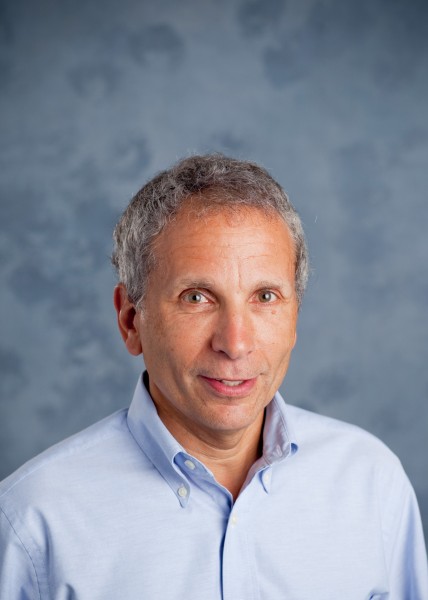
07 Jan To Your Health: Fiber, Too Much & Not Enough!
Dr. Alan Safdi, a world-renowned internist and gastroenterologist with encyclopedic knowledge of mind-body wellness and preventative medicine, posts on Telluride Inside… and Out under the banner of “To Your Health.” His blogs feature the most current information in his field: health, wellness, and longevity.
Winter and summer 2020, Dr. Alan is offering 14 seminars to medical professionals. The general public is welcome. Also this summer, he returns with his popular Live Longer Retreat wellness intensives. For all programs, go to his Telluride Longevity Institute website or sign up by calling 1-877-448-5416.
This week, Dr. Alan talks fiber and the warning signs of too much and not enough.

Fiber is vital for a healthy digestive system. It facilitates fermentation and gas formation, and helps improve the bulk and regularity of bowel movements. In addition, a high-fiber diet can help with the regulation of lipid and blood pressure levels, diabetes control, and weight maintenance. Fiber is food for the human microbiome – the 100 trillion organisms that live within us – that is so important for our overall health.
There is about a 15% to 30% reduction in all-cause and cardiovascular-related mortality upon comparing subjects who ate the most vs least amounts of dietary fiber.
The consumption of food rich in fiber also decreased the frequency of heart disease, stroke, type 2 diabetes, and colon cancer by 16% to 24%. In other words, for every 1,000 subjects, there were 13 fewer deaths and 6 fewer cases of coronary heart disease among those who ate fiber-rich foods.
Total deaths and incidences of coronary heart disease, type 2 diabetes, and colon cancer dropped by 5% to 27% for every 8 g of fiber consumed daily. Furthermore research has observed an increase in protective benefit in terms of stroke and breast cancer. Eating 25 g to 29 g of fiber daily provided adequate protection against disease. However, higher intake of dietary fiber could provide greater benefit, according to current research findings.
Going against the grain:
But yes, it’s possible to eat too much fiber, and if you do, the results can be explosive.
In my practice I have only seen a few people who had been taking in too much fiber in contrast to lots of patients taking in way too little.
As with most everything, moderation of this carbohydrate is key. Eating too much fiber (> 70 g daily)—as is common with whole or raw-food diets—can result in you having to make beelines for the bathroom, as well as other uncomfortable side effects.
Fiber requirements:
The American Heart Association recommends fiber intake from a variety of foods. Total dietary fiber consumption should range from 25 to 30 g daily from food — not supplement — sources. More specifically, the Academy of Nutrition and Dietetics recommends 25 g of fiber per day for women; 38 g a day for men. Adults aged 50 years and older should consume less fiber, at 21 g per day for women and 28 g per day for men. Pregnant or lactating women should eat 28 g of fiber per day.
Types of fiber:
Fiber exists in two forms: soluble and insoluble. Even though the body can’t absorb either, they are both necessary. Soluble fiber breaks down in water and forms a gel that keeps feces soft while also slowing digestion. Insoluble fiber does not break down, instead adding bulk to stool and decreasing transit times. Since as stated the body needs both types of fiber, most research simply focuses on total fiber intake.
Too much fiber:
Symptoms of eating too much fiber can include bloating, gas, cramping, constipation, diarrhea, reduction in appetite, and early satiety.
Among the negative side effects of overconsumption of fiber is under-absorption of key micronutrients, since fiber binds with minerals, such calcium, iron, magnesium, and zinc.
Furthermore, high-volume meals can make it difficult to keep up energy intake, resulting in weight loss or lack of weight/muscle gain.
Lastly, intestinal obstruction can occur in the setting of copious fiber intake, but limited fluid intake.
What to do if you are consuming too much fiber in your diet, try the following:
• Stop eating products with added fiber, such as high-fiber cereal bars or high-fiber breads
• At mealtime, replace high-fiber foods, including grains, with lower-fiber alternatives
• Avoid foods that cause bloating, such as sugar-free gum and candy
• Choose cooked over raw veggies
• Increase fluid intake
• Exercise more
In one prospective, longitudinal case study involving 63 patients with idiopathic constipation, reduced fiber intake decreased constipation, bloating, and stomach pain, and increased the frequency of bowel movements.
Specifically, during a period of 6 months, 41 patients were on a no-fiber diet, 16 were on a reduced-fiber diet, and 6 continued on a high-fiber diet due to personal or religious factors. Participants who stopped their dietary fiber intake completely went from having 1 bowel movement every 3.75 days to having 1 per day. In those who reduced their fiber intake, bowel movement frequency went from 1 every 4.19 days to 1 every 1.9 days.
High-fiber foods
The list includes fruits such as raspberries, pear, apple (with skin), and banana.
Sources of high-fiber veggies include green pears, broccoli, potato (with skin), sweet corn (boiled), cauliflower (raw), carrot(raw).
Other sources include spaghetti (whole wheat, cooked), barley(pearl, cooked), branflaakes, oat bran muffin, oatmeal, popcorn (air-popped), brown rice (cooked), bread (whole wheat and rye), chia seeds, almonds, pistachios.
Finally, remember that fiber is a really important part of the diet. If a person feels sick from eating too much fiber, then a low-fiber diet may be a good idea for some period of time, with limited amounts of fiber gradually re-introduced – but very few people in my experience take too much fiber from real foods.
I have often recommended increasing dietary fiber intake and replacing refined grains with whole grains to curb any risks associated with a gamut of diseases.
Always discuss any changes in your diet with your primary care provider.
Dr. Alan, more:

Dr. Alan Safdi is board-certified in Internal Medicine and in Gastroenterology and is a Fellow of the American College of Gastroenterology. A proven leader in the healthcare arena, he has been featured on the national program, “Medical Crossfire” and authored or co-authored numerous medical articles and abstracts. Safdi has been involved in grant-based and clinical research for 30+ years and is passionate about disease prevention and wellness, not just fixing what has gone wrong. He is an international lecturer on the subjects of wellness, nutrition and gastroenterology.
And back by popular demand, this summer, in partnership with the Peaks’ Spa, Dr. Safdi returns with his three, week-long wellness intensives titled Live Longer Retreat.
Again, using an evidence-based, scientific approach to health and longevity and featuring an experienced staff of medical professionals, personal trainers, Pilates and yoga instructors, dietitians, and chefs, the focus is on your unique wellness profile. Each Live Longer Retreat is one-of-kind in the U.S. Those intensives, limited to only 10 – 15 participants, will include personal consultations, hiking, spinning, yoga, Pilates, talks and demonstrations related to nutrition, cooking classes, and more.
Go here to read a review of the experience by one very satisfied participant.


Sorry, the comment form is closed at this time.